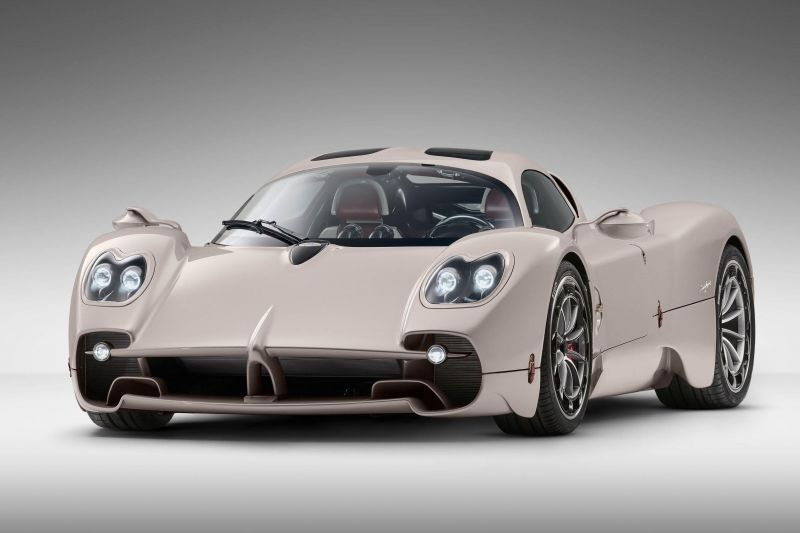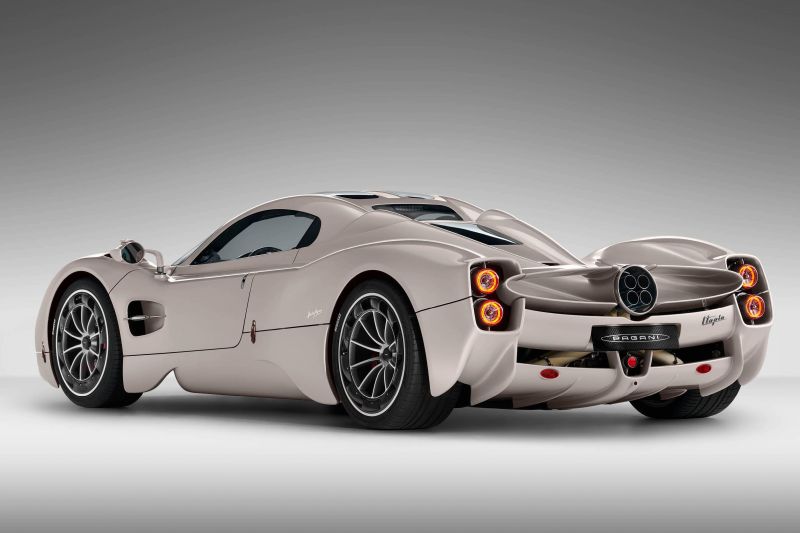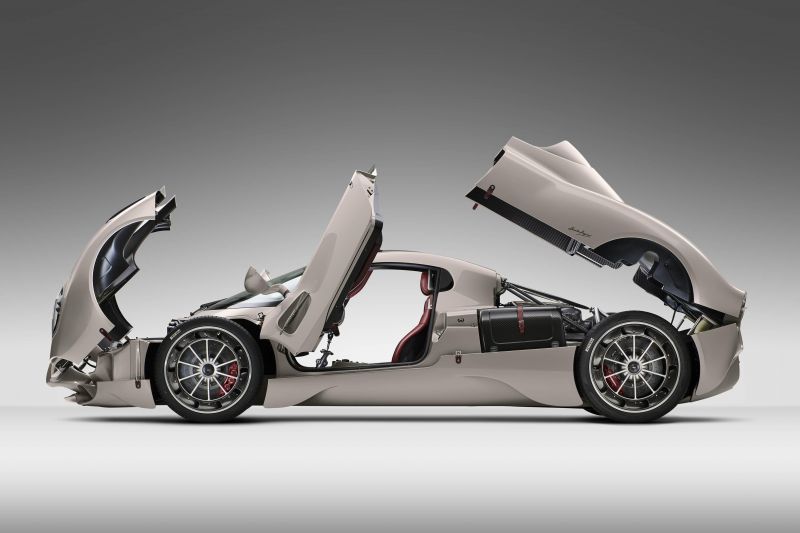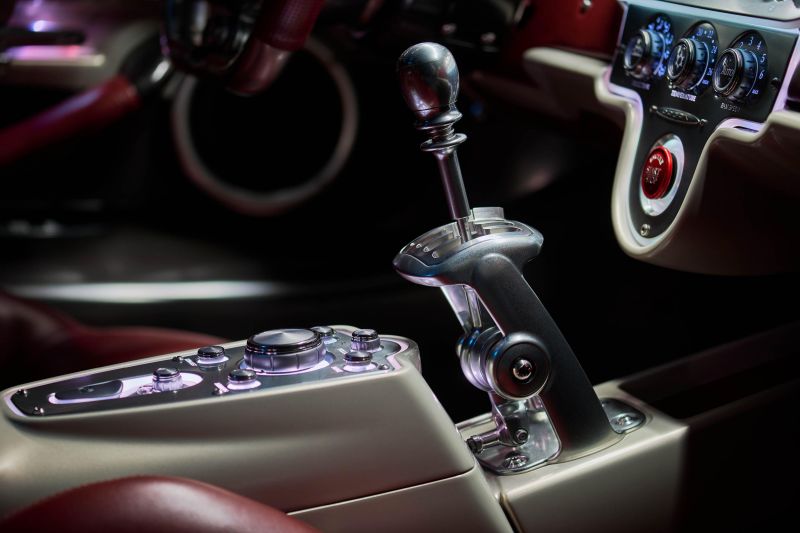Pagani’s idea of Utopia is (for now) a vehicle free of electric motors and touchscreens of any kind.
The Utopia is the Italian automaker’s third-generation vehicle. It follows the Zonda launched in 1999, and the Huayra which made its debut in 2011.
Behind the passenger cell is a twin-turbo V12 engine Pagani says has been “developed on a bespoke basis” by Mercedes-AMG. The 12-cylinder engine develops 635kW at 6000rpm, and 1100Nm between 2800 and 5900rpm.
It drives the rear wheels via a seven-speed transversely-mounted automated manual transmission. Pagani points out it decided not to go with a dual-clutch gearbox as it is heavier and “robs the driver of the ability to set the pace of the car’s acceleration”.
A seven-speed manual transmission specially developed to handle the engine’s mountain of torque is also available.
No performance figures have been issued at this stage but with a dry weight of 1280kg, the Utopia should be adequate in this department.
The Utopia features a monocoque body made from a mix of carbon-fibre and titanium, with chromium molybdenum steel front and rear subframes.
Pagani says the Utopia’s torsional rigidity is up at least 10.5 per cent over the outgoing Huayra.
While the exterior is a clear evolution of the design used on the Zonda and Huayra, it is all new and features 20 per cent fewer parts than before.
Up front there are cooling ducts built into the front splitter and bonnet, and a one-piece headlight unit. Along the sides the sills have been twisted and folded to improve lateral air flow.
At the rear there’s the company’s signature quad-exhaust stack, while the tail-lights are said to be inspired by jet turbines.
At the front the Utopia rides on a unique-looking set of 21-inch forged aluminium alloy wheels with Pirelli P Zero Corsa 265/35 tyres developed specifically for the car, while at the rear there are 22-inch rims shod with hulking 325/30 rubber.
The car has independent double wishbone suspension with helical springs at both ends, as well as semi-active shock absorbers that aim to deliver both handling prowess and a modicum of ride comfort.
Stopping ability comes courtesy of ventilated Brembo carbon-ceramic brakes, with the 410mm front discs paired with six-piston calipers, and the 390mm rear units using a four-piston caliper.
In an increasingly digital world, Pagani’s only nod to current trends is a digital display between the analog speedometer and tachometer.
The interior is said to be inspired by the aesthetics of leather goods and watches from the 1950s and 1960s.
In addition to a steering wheel machined from a single block of aluminium the cabin also has an intricate gated shifter, and illumination surrounding all the main control pods.
Just 99 coupes will be built during the Utopia’s initial production run, and all already spoken for. If the Zonda and Huayra are any guide, there will be special edition models and roadsters in the Utopia’s future.












